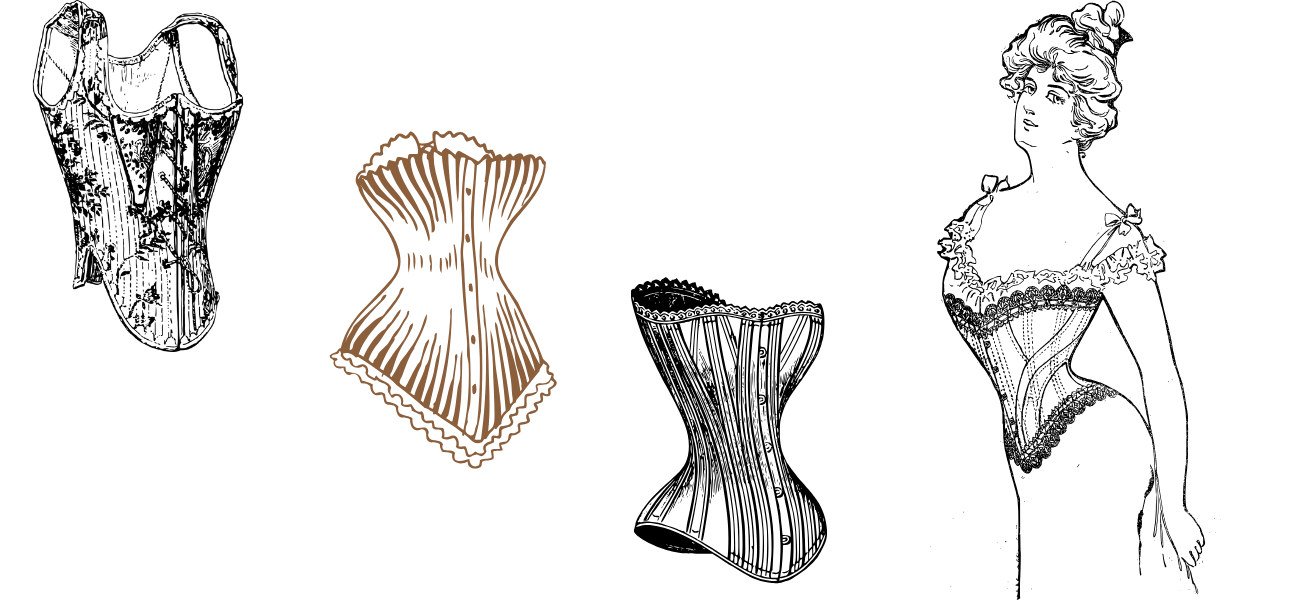- May 23, 2025

10 Facts About Corsets You Didn't Know
Corsets were more than just fashion — they shaped posture, politics, protest, and even furniture. From whale bones to hidden pockets, discover the untold history of this powerful garment.
The corset is more than just a cloth from the past. It represents all aspects of the feminine existence, including seduction and self-denial, beauty and suffering, and obedience and revolt. It contains the values of whole periods, social mores, and the fight for individuality.
We see a lovely woman with an exquisitely small waist when we think of a corset. But the reality is far more complex — and much more fascinating. The corset has served as a medical instrument, a tool of power, and a symbol of defiance. Some of its mysteries can completely alter your perspective on the past.
We’re going to explore a realm of information today that you’ve probably never heard of before. And maybe — just maybe — you’ll never look at this piece of lingerie the same way again.
Corsets Weren’t Just for Women — Men Wore Them Too
Corsets were not just worn by ladies between the 17th and 19th centuries. Specially made “masculine” corsets were worn by politicians, military officers, and aristocratic men. A flat stomach, straight posture, and a tiny waist—all of which are linked to strength and discipline—helped to visually accentuate one’s body.
In France, it was considered a sign of refinement: not just being clever, but looking sharp. Even on the battlefield, some made an impact by donning corsets beneath their uniforms.

Not All Corsets Were Torture Devices
Wearing a corset on a regular basis was mostly painless, despite the myths of fractured ribs and fainting episodes. Women got used to them — just like we get used to bras or jeans today. Although excessive tight-lacing for status or fashion did occur, most women found that corsets were surprisingly pleasant for daily wear and were well-fitting to the body.
Girls Were Trained to Wear Corsets from a Young Age
In 18th-century aristocratic households, girls were exposed to corsets before they reached adolescence. Their posture, discipline, and “preparation for their future role as women” were all influenced by tiny models known as training corsets. It wasn’t just clothing — it was a tool of social conditioning.
Whales Were Killed for Fashion — Because of Baleen
Inside corsets, manufacturers often used baleen — a strong yet flexible material sourced from the mouths of whales. It wonderfully maintained the curve of the corset. Whaling became a huge industry because of demand from the fashion sector. Dozens of whales might perish in a single fashion season as they strive for the ideal shape.
Corsets Were About Control — Not Just Fashion
The corset evolved to represent a “well-bred” woman in various cultures. Your physique had to show that you were disciplined, modest, and restrained. Suppression of desire, obedience, and morality were all indicated by a tightly-laced corset. And the opposite — a free waist — was nearly scandalous.
“Health Corsets” Really Did Exist — And Were Promoted by Doctors
Health corsets were an alternative that appeared in the 19th century. These versions, which were created by female physicians and women’s fashion reformers, had greater mobility, fewer boning strips, and no abdominal compression. Instead of punishing the body, they were there to support it. These were the first attempts to make fashion less toxic to women’s health.

“Perfect Health” Corset c 1890.
Corsets Had Hidden Pockets — For Secret Little Things
Small hidden pockets were stitched into several corset styles. Women would conceal perfumed handkerchiefs, lip balm, cash, keys, and even love letters. The corset was the safest location for the most intimate items since it was the closest object to the body.
In the 20th Century, Corsets Became Erotic Symbols
In the 1940s–50s, after a practical break during the war years, corsets came back — but now as symbols of seduction. They had deep necklines and were composed of satin and lace. Movie actresses, cabaret performers, and pin-up models all wore corsets. They were more than simply clothing; they were a bodily performance and a representation of boldness, fashion, and sexuality.
Furniture Was Redesigned Because of Corsets
Even the designs of chairs and couches of the Victorian era were modified to accommodate corseted bodies, which may seem ridiculous, but it is real. Armrests were lowered and chair backs were adjusted to allow ladies to sit comfortably in spite of their limited mobility. Fashion dictated not just clothing — but interior design too.
Today’s Corset Is Not Oppression — It’s a Choice
Contemporary corsets hug rather than squeeze. With an emphasis on comfort and style, they are constructed from breathable, elastic materials. Women wear them because they choose to, not because they’re “supposed to.” Today, wearing a corset is a means to express that you are aware of the women who came before you. Additionally, I am free to be who I am, on my own terms.
Conclusion: When History Is Laced with Beauty
The corset is a mirror of time It conveyed a distinct narrative in each age, whether it was one of physical strength, social expectation, glamor, or submission. It served as both the battleground of feminine identity and the foundation for modern beauty standards.
Today, when we wear a modern corset or corset-style top, we’re no longer following someone else’s rules. Our own is being written. Confidence is more important to us than discomfort. Power exceeding limitation.
Because the purpose of contemporary lingerie, like the people who wear it, is to satisfy no one else. It’s here to be real. For you.
And if once a corset was a symbol of control — today it’s an accessory of freedom.
